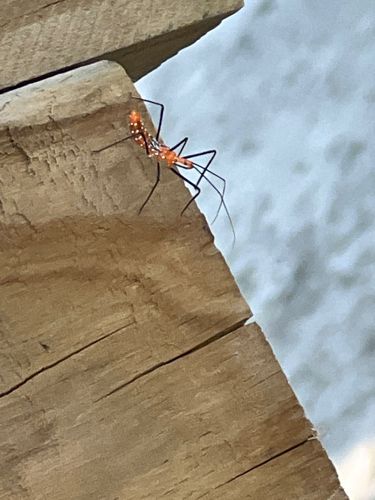Assassin Bug Nymph (Likely Reduvius personatus or another species in Reduviidae)
Scientific Name: Reduviidae (Nymph)
Order & Family: Order: Hemiptera, Family: Reduviidae
Size: Nymphs vary in size depending on their instar, typically from a few millimeters to about 20-25 mm for larger species when adults.

Natural Habitat
Widely varied depending on the specific species, but generally found in gardens, fields, forests, and sometimes around human dwellings. They tend to prefer areas with ample prey.
Diet & Feeding
Mainly other insects and small arthropods. They are generalist predators, feeding on a wide variety of prey including flies, caterpillars, beetles, and sometimes even other bugs.
Behavior Patterns
Assassin bugs are generally solitary predatory insects. They move stealthily to ambush their prey or may actively hunt. They use their strong, curved proboscis to inject paralyzing and liquefying saliva into their prey, then suck out the body fluids. Some species may feign death when disturbed. The nymph shown in the image is a juvenile stage and will molt several times before reaching adulthood.
Risks & Benefits
Risks: Some assassin bug species can deliver a painful bite if mishandled or threatened. While generally not medically significant, the bite can cause localized pain, swelling, and redness. They are not known to transmit diseases to humans. Benefits: Assassin bugs are highly beneficial in agriculture and natural ecosystems as natural pest control agents, preying on many insect pests that can damage crops or nuisance insects.
Identified on: 9/2/2025